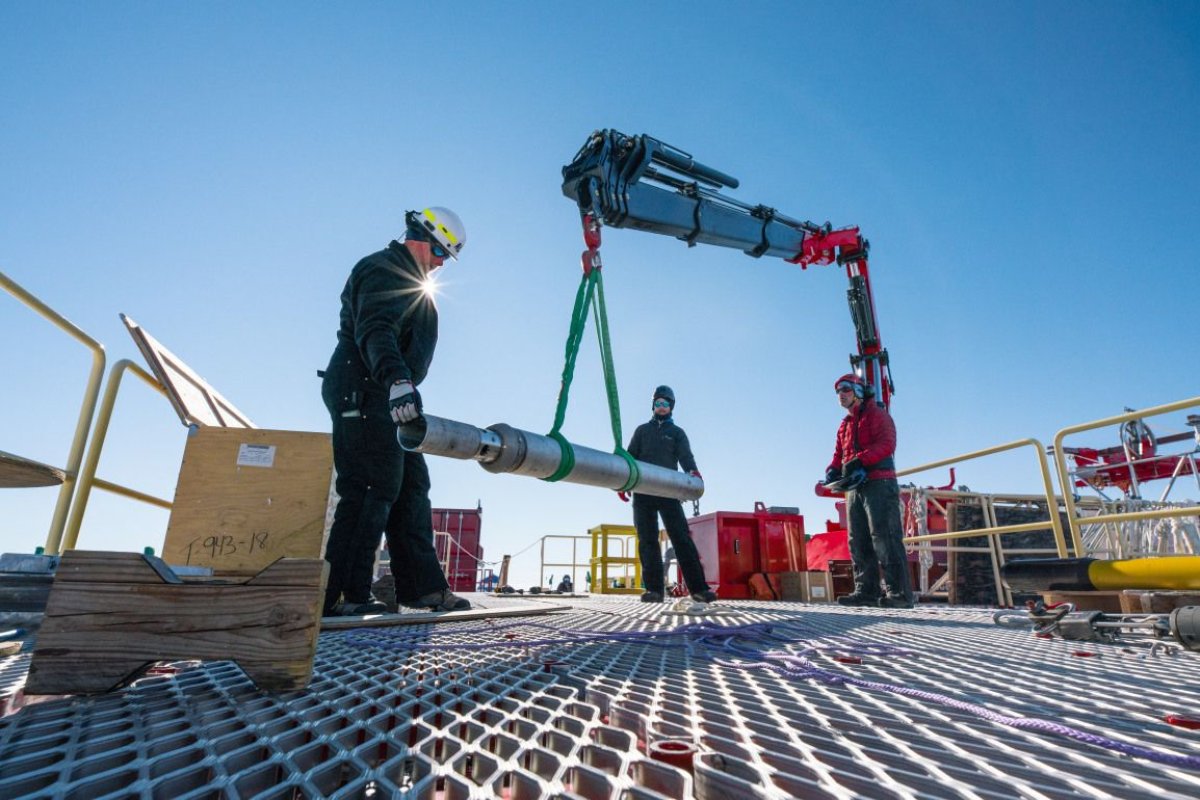Scientists have successfully drilled over 3,500 feet into the Antarctic ice to reach a mysterious subglacial lake locked away beneath. By taking samples from the water, researchers hope to learn more about what sort of life can exist in one of the most extreme and isolated ecosystems on the planet.
The Subglacial Antarctic Lakes Scientific Access (SALSA) project aims to study the geobiology of Mercer Subglacial Lake—a "hydrologically active" lake that sits under the the Whillans and Mercer ice streams in West Antarctica. It is run by scientists from eight different U.S. institutions, as well as international collaborators.
Read more: Radioactive rocks under Antarctica made an area of ice the size of Rhode Island disappear
The project was launched in 2016 and, since then, scientists have been working to reach this hidden realm.
They started drilling the main borehole on December 23. Three days later, at 10.30pm local time, they reached the lake. "The drill team then reamed (smoothed and widened) the borehole so that instruments can be sent down," a statement from SALSA said. "As of December 27th, the first instrument sent into the lake was the Deep SCINI Clump Weight which captured footage of the borehole and the lake and provided measurements of depth, conductivity, and temperature."
Subglacial lakes are some of the least explored ecosystems on Earth. It is thought we know more about Mars than we do about what is hidden under Antarctica's ice. A major problem for scientists trying to understand this environment is the risk of contamination—anything inadvertently introduced to the water or sediments while taking samples would give an unrealistic picture of the true environment.
Because of this, the water used in the drill to reach Mercer lake had to be "as clean as filtered water can get," Brent Christner, principle investigator of SALSA, said. The team said that when the drill broke through the final bit of ice to reach Mercer, only the tiniest fraction entered the lake.
The next stage of the project is to take samples from the lake. They will also be mapping the rest of the region's subglacial lakes with electromagnetic sensory equipment.
Matt Siegfried, one of the SALSA team members, told the website Earther: "We're knee-deep right [now] sampling the deepest standing water body humans have ever accessed beneath Antarctica … It'll take some time to process what the 'most' exciting part [is]."
John Priscu, chief scientist for SALSA, added: "We don't know what we'll find. We're just learning, it's only the second time that this has been done."

Uncommon Knowledge
Newsweek is committed to challenging conventional wisdom and finding connections in the search for common ground.
Newsweek is committed to challenging conventional wisdom and finding connections in the search for common ground.
About the writer
Hannah Osborne is Nesweek's Science Editor, based in London, UK. Hannah joined Newsweek in 2017 from IBTimes UK. She is ... Read more
To read how Newsweek uses AI as a newsroom tool, Click here.








